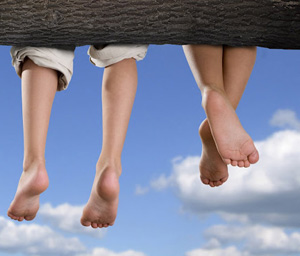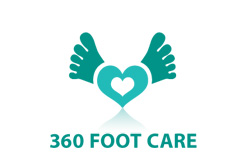Common Foot Problems in children
Many children’s foot issues may be attributed to poorly fitting footwear / hosiery and at no time is this more detrimental than when our feet are brand new and very young!
At birth the bones in our feet are soft and have not yet formed. It takes up until we are in our twenties before the foot bones are fully developed and have ‘hardened’ (also known as ‘ossified’).
The development of a child’s foot is aligned with the stages of functional development – from learning to crawl, starting to walk as a baby/toddler to walking in an adult manner. Therefore, it is very important that your child’s feet are protected by the right size of baby-grow, socks and shoes as they go through each stage.
Below are some web links that will take you to good web sites with detailed information in relation to your child’s foot health as they grow, give appropriate footwear advice and provide a list of Childrens shoe shops that have trained fitters.
KidsFoothealth by Clarks
Childrens Foot Health Register
Startrite Childrens Foot Health
Healthy little feet
Verrucas
see the information located in the section Common Skin Problems
Curly toes
These can be present from birth or can develop as the child starts to walk.
They usually occur in the 3rd, 4th or 5th toes and can be present in one or both feet. They can be inherited (one or both parents may have curly toes) but poor fitting shoes and hosiery may be a contributing factor.
Up to the age of 4 years the toes are relatively supple as the bones are still developing so it is possible for your Podiatrist to help straighten the toes with regular taping and stretching exercises to help stretch out the tight tendons over a period of time. They may not cause your child any obvious problems, but might lead to problems with shoes fitting correctly; the development of hard skin and sometimes this can result in pain or discomfort.
A podiatrist can help to advise you on the best type of treatment for your child.
Flat Feet
Up to approximately 5 years of age children still have quite a bit of ‘puppy fat’ on their feet. This means you don’t see the same type of arch profile as you would in an adult foot. This is a normal developmental feature.
From about the age of 5 years onwards you should start to see a visible foot arch as the bones continue to develop into the mid-late teens.
If you notice that your child appears ‘flat-footed’ and has no visible arch, it is worth taking them to be assessed by a Podiatrist to see if there is any reason for this, especially if the child reports any pain or complains of ‘tired achy’ feet.
In-toeing or Out-toeing
This may occur in children as part of normal development as the bones in the feet and legs develop towards their adult state.
If you are concerned about the way your child walks and want some advice about how best to manage in or out-toeing, you should seek the advice of a Podiatrist who will assess your child according to their stage of development and advise you accordingly.
Tip-Toe walking
some children just like to walk around on their tip-toes and it becomes a habit! However, if the child is unable to get their heel to the floor they may have other problems such as tight tendons around the heel and ankle.
This type of problem may require a special exercise programme to stretch out the muscles and tendons and sometimes insoles to help support the foot.
A podiatrist can assess your child appropriately and can refer you to a Physiotherapist for effective exercises.


Lindsey Young BSc (Hons) MChs
HCPC Registered
01995 608777
01254 823183
07772 259576
